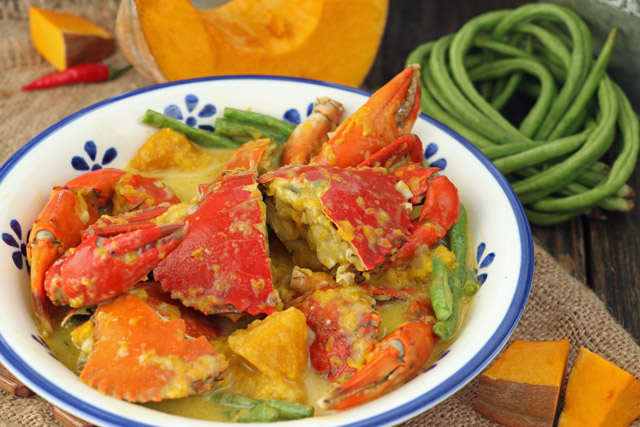The coconut crab, also known as the robber crab or palm thief, is the largest land-living arthropod in the world. This giant hermit crab has powerful claws that can crack open a coconut, hence its name. Coconut crab meat is considered a delicacy in many parts of the world due to its sweet and delicate flavor with a subtle coconut essence.
However, cooking coconut crab requires special care and technique to bring out its best flavor and texture. This comprehensive guide will walk you through the process step-by-step from sourcing to preparation methods to serving. Follow these tips for a delicious coconut crab feast!
Sourcing Coconut Crabs Ethically
Before cooking it’s essential to source coconut crabs responsibly. Coconut crabs are classified as vulnerable due to overhunting and habitat loss. Avoid purchasing from unverified vendors or regions where harvesting is unregulated or banned. Opt for crabs from reputable sustainable farms or fisheries with catch limits. Only cook what you plan to eat to avoid waste.
Preparing Coconut Crabs
Proper preparation is vital for coconut crab’s unique taste and texture Here are the key steps
-
Purging: Place the live crab in a container with ample clean, salty water for 24-48 hours before cooking. Change the water periodically to flush its system. Some chefs feed it coconut or fruit during this time.
-
Humane dispatch: Rapidly plunge a sharp spike into the nerve center behind the crab’s eyes before cooking. This is the most humane method.
-
Cleaning: Use scissors to remove the exterior fuzzy hair-like coating and small legs. Rinse well.
Cooking Methods for Coconut Crab
There are several excellent cooking methods to try:
Steaming
- Place crab on a steaming rack above boiling water for 20-30 minutes. Shell turns vibrant red when done. Retains moisture and subtle flavors.
Boiling
- Boil crabs for 15-20 minutes in a large pot of salted water. Produces a tender texture but can dilute taste slightly.
Grilling
- Pre-steam crab for 10 minutes then grill over medium heat for 5-10 minutes per side, basting with butter or oil to prevent drying out. Adds wonderful smoky notes.
Baking
- Bake at 350°F for 25-35 minutes on a sheet with a bit of water or broth. The oven’s dry heat concentrates flavors.
Stir-frying
- For a unique take, briefly steam crab then stir-fry with spices and veggies. Avoid overcooking.
No matter the technique, cook just until the shell turns bright red and meat is opaque. Check for doneness after the minimum suggested time.
Serving and Eating Coconut Crab
Once cooked, let the crab cool slightly before cracking it open. Use a heavy mallet or crab cracker to break the shell and extract the prized meat from the claws, legs, and body cavity.
Coconut crab meat has a naturally sweet flavor that pairs well with simple seasonings. Try dipping the meat in:
- Melted butter
- Fresh lemon or lime juice
- Garlic sauce
- Salt and black pepper
For a tropical flair, add a garnish of toasted coconut flakes. Serve alongside coconut rice and a crisp white wine like Sauvignon Blanc.
Portion the meat onto small plates since it has a rich, decadent quality. Coconut crab is best enjoyed freshly cooked. Refrigerate leftovers for up to 2 days. Avoid freezing the meat as it damages the texture.
Tips for Successful Coconut Crab
Follow these tips for the perfect coconut crab every time:
-
Check regulations before sourcing crabs to avoid potential fines for illegal harvesting. Only cook what you will eat.
-
Purge the crabs in clean, salty water for at least 24 hours before cooking to flush the flavor.
-
Use the quick spike method to humanely dispatch the crabs before cooking.
-
Steam, boil, grill, or bake the crabs just until the shell turns bright red, about 20-30 minutes. Overcooking makes the meat rubbery.
-
Let the cooked crabs cool for easier handling before cracking the shell. The meat pulls away cleanly when fully cooked.
-
Season simply with lemon, garlic, butter, and fresh herbs to allow the natural sweetness to shine.
-
Refrigerate leftovers for up to 2 days or enjoy the crab freshly cooked for the best quality. Avoid freezing the meat.
With proper care in sourcing and preparation, cooking coconut crabs is deeply rewarding. The subtle sweetness of the meat balanced with simple flavors makes for an incredible gourmet experience. Savor this delicacy for a taste of the tropics, but be sure to cook and consume responsibly.

Item added to your cart
Use fresh crabs, once they have been in the fridge for a day or two, they just don’t taste as good and the meat is soft and watery.
Huge Coconut Crab!! (UNLIKE Any Other Crab on Earth!!) South Pacific Islands
FAQ
Are coconut crabs good eating?
Yes, coconut crabs (also called robber crabs) are very good eating, wherever they live. There are many popular recipes for them. They tear open coconuts with their claws, so handle with great care! They can easily remove one or more of your fingers.
Are coconut crabs legal in the US?
Long story short, someone showed me a coconut crab for sale and the wikipedia says it’s a threatened species. Endangered Species Act says possessing a threatened species is a Class C Felony.
What do you get from killing the coconut crab?
The loot it drops is sprayed around the field similar to a Sprout, however, only you can see and pick up the tokens. You can also pick up all the loot dropped with a token link. The quicker you kill the Coconut Crab, the more Tropical Drinks and Coconuts it will yield.
